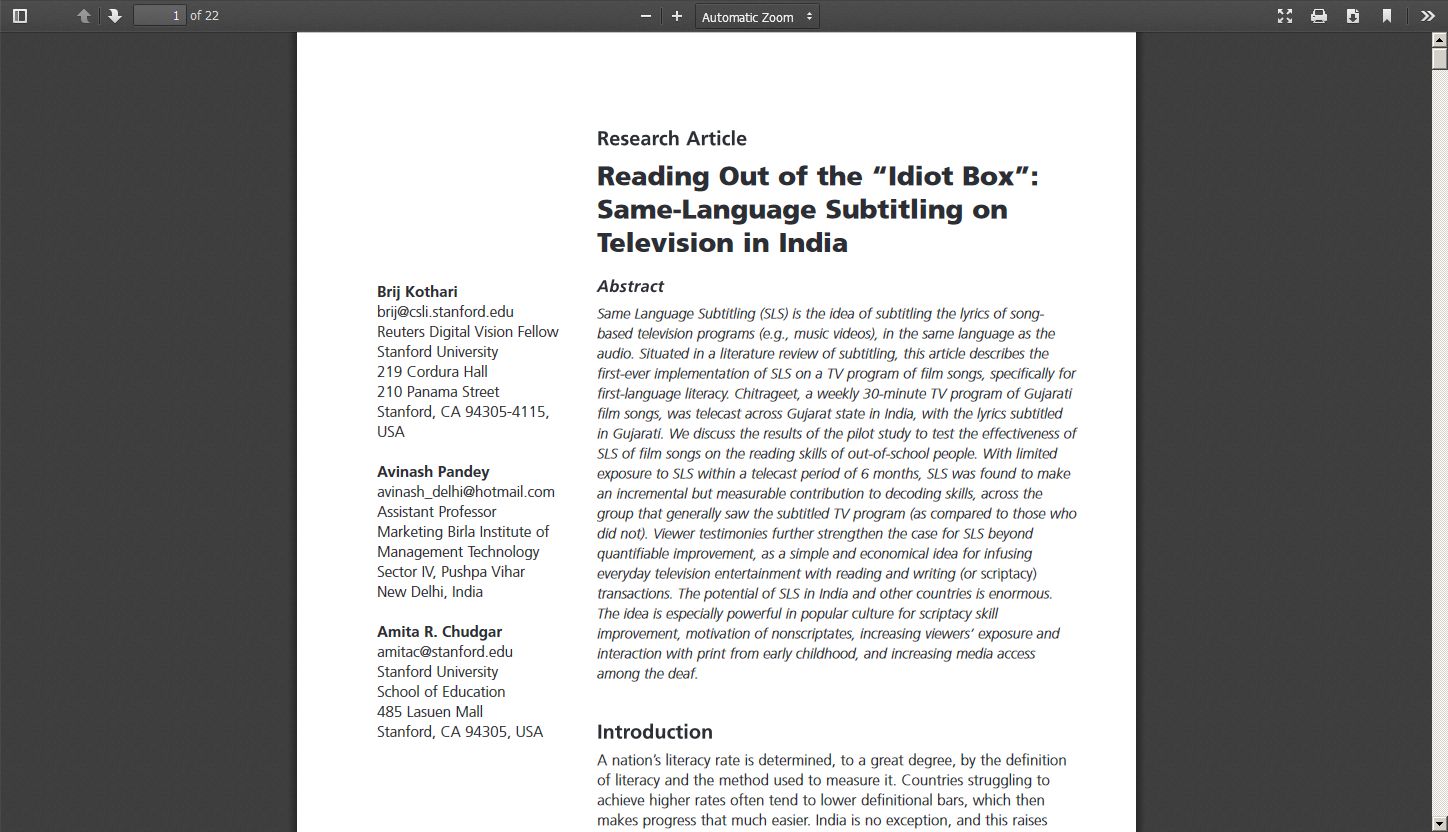Learning Center
-
Reading Out of the "Idiot Box": Same Language Subtitling on Television in India
Same language subtitling (SLS) is the idea of subtitling the lyrics of song-based television programs (e.g., music videos) in the same language as the audio. Situated in a literature review of subtitling, this article describes the first-ever implementation of SLS on a TV program of film songs, specifically first-language literacy. "Chitrageet," a weekly 30-minute TV program of Gujarati film songs, was telecast across Gujarat state in India, with the lyrics subtitled in Gujarati. Discusses the results of the pilot study to test the effectiveness of SLS of film songs on the reading skills of out-of-school people. With limited exposure to SLS within a telecast period of 6 months, SLS was found to make an incremental but measurable contribution to decoding skills across the group that generally saw the subtitled TV program (as compared to those who did not). The idea is especially powerful in popular culture for literacy improvement, increasing viewers' exposure and interaction with print from early childho...Read More
about















